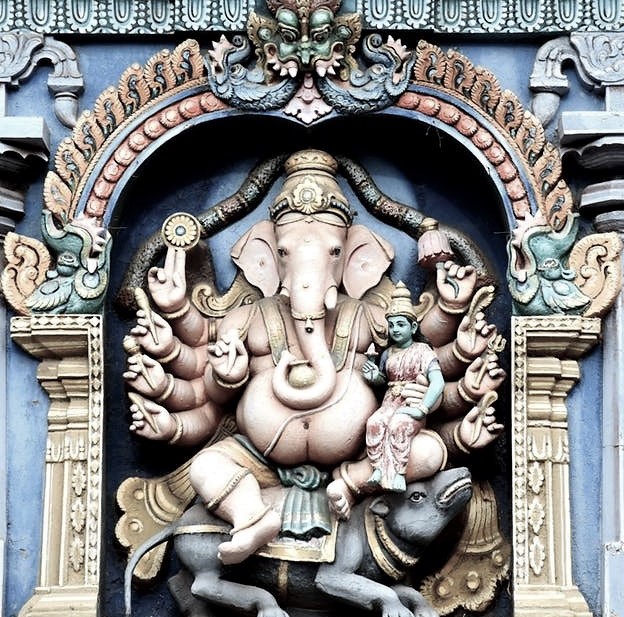- Special FeaturesFoundation Year16th centurySthala TreeTheerthamRathamtrueArchitectureOther Speciality
- Sthala Puran
The temple is believed to be constructed during the middle of the 16th century, as per the writing on a plaque near the temple dome, by ancestors of the Kshatriya samaj who descended from the royal Surve family from Prachitgad near Shringarpur of Ratnagiri district of Maharashtra.
This Kankunkar clan was founded by prince Kashi Purush and his band of brothers who founded the various Gharwais under Shristhal, Canacona. They were escaping from Mahmud Gawan's wrath after his father switched loyalties from Bahamani to Vijayanagara. Since Goa's Goud Saraswat Brahmins were known to work for Vijaynagara they chose to settle in Canacona. Rao Rana Shurveer Suryarao(Suryaji) Surve who was respected and valued by Shivaji despite being his adversary belonged to the family that stayed back at Shringarpur after the scuffle with Mahmud Gawan and hence was extremely loyal to the Bhramanis.
Legend has it that the location of the temple was the place where Lord Shiva united with his consort Parvati after a long period of separation. Another source mentions that the demon Malla was fighting with one of the Pandava brothers, Arjuna. Shiva assumed the form of a hunter and killed Malla and saved Arjuna and hence the name ‘Mallikarjun'. The temple is also known as Adavat Sinhasanadhishwar Mahapati Canacona among the locals.
The Linga is believed to be Swayambhu lingam, uncovered by a member of the Kunbi community while clearing the forest and it is a phallic-shaped uncut stone covered with a metallic mask.
- Architecture
The temple with its beautiful wood and silver carvings is reputed to have been erected by Habu Brahmins of the Dravidian dynasty.[3] One can see some of the finest surviving art on the six pillars in the mantapa or the assembly hall. One of the wooden pillars in the mandapa is used as the oracle pillar in the temple. These pillars have intricate carvings with scenes from the Puranas and Mahabharat. On either side of the doors leading to the inner sanctum one can see beautifully carved silhouettes of the doorkeepers or dwarpal.
- Alankar of Deity
- Prayers and BenefitsSpecial Vratas and PrayersOfferings to DeityStotras and Mantras
- FestivalsShisharaniThis typical ritual alternates every year with the Veeramel celebration held at the time of the traditional Shigmo festival. The word Shisharani is supposed to mean a cooking place on top of a human head. This ritual involves cooking rice in an earthenware kept on the head of three men who sleep on the ground with their heads touching each other and fire is lit between the heads to cook the rice. The heads are covered with wet cloth and layers of plantain trunkJatraThe annual festival (Jatra) held at the temple is quite unique among the temple festivals of Goa. Early morning on the day of the festival, the idol of the deity is taken out in a procession which travels for almost 2–3 hours to reach the nearby Rajbag beach. A number of rituals including a special bath for the deity are held at the beach, after which the deity is taken back to the temple. Hundreds of devotees have a holy bath at the same time on the seashore.VeeramelThis celebration is held once every two years at the time of the traditional Shigmo festival. During this celebration which occurs close to midnight, selected local youth who are called Gade, rush from house to house with swords in their hands followed by people with drums and other musical instruments.Avatar PurushThese are actually smaller deities called Avatar Purush located at three nearby places: Asali, Khalvade and Bhatpal where they are worshipped. But once a year, they are taken in a magnificent procession at night to the main temple at Sristhal.
- Sodasha Upcharas
- Prasadhas
- Social ActivitiesAnnadhanMarriageEar BoringHead ShaveDanaasEducation FacilitiesSocial DrivesOther Activities
- Arjita Seva
- Tags

